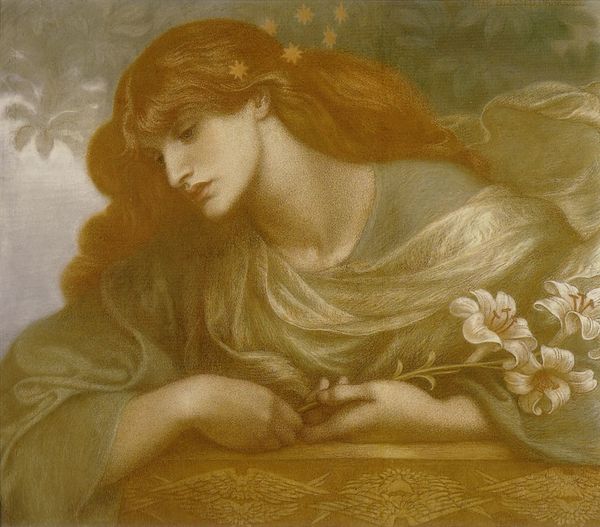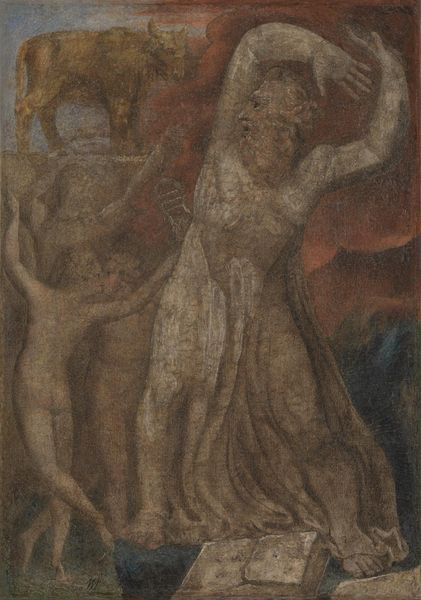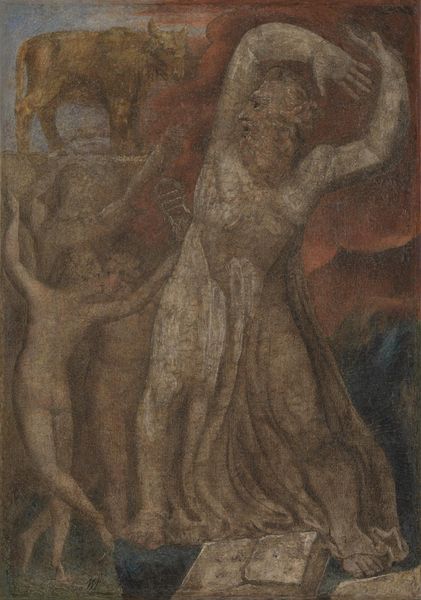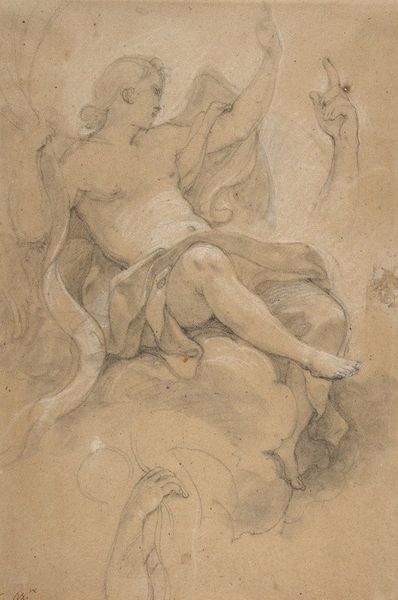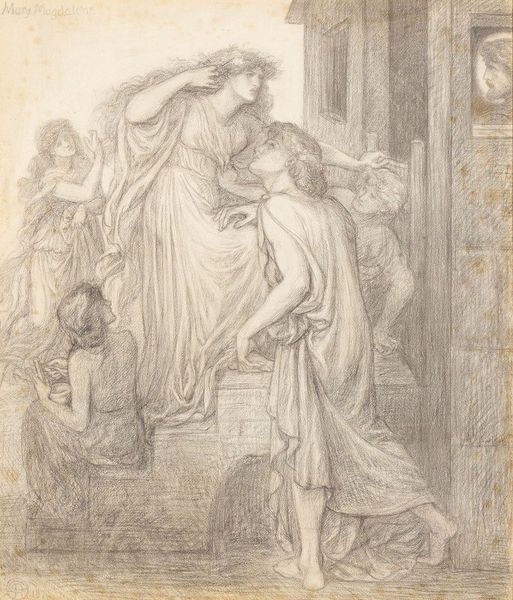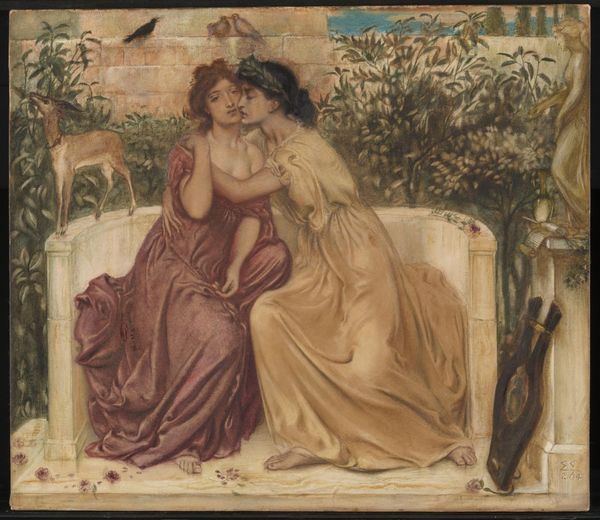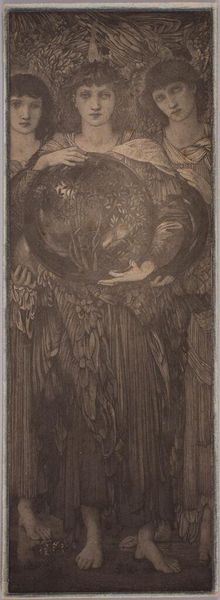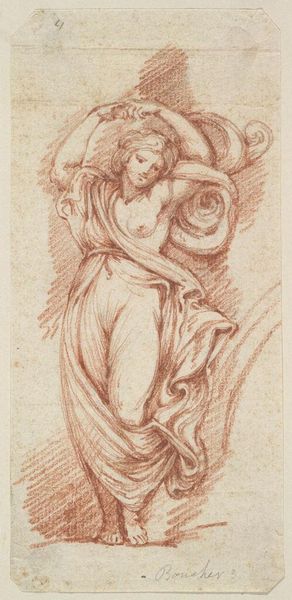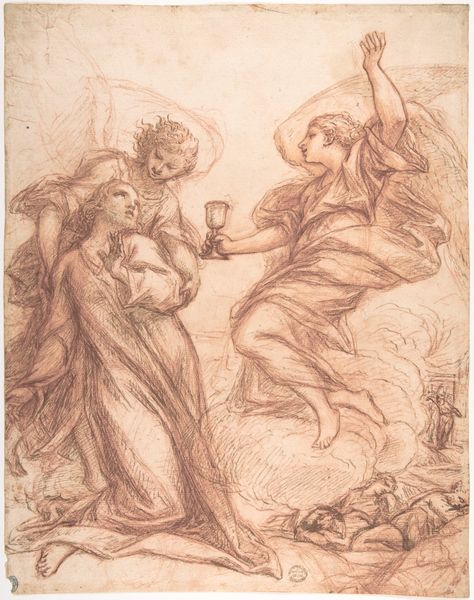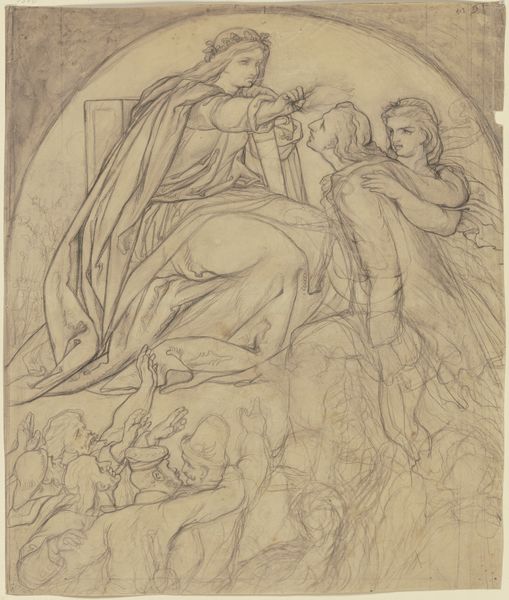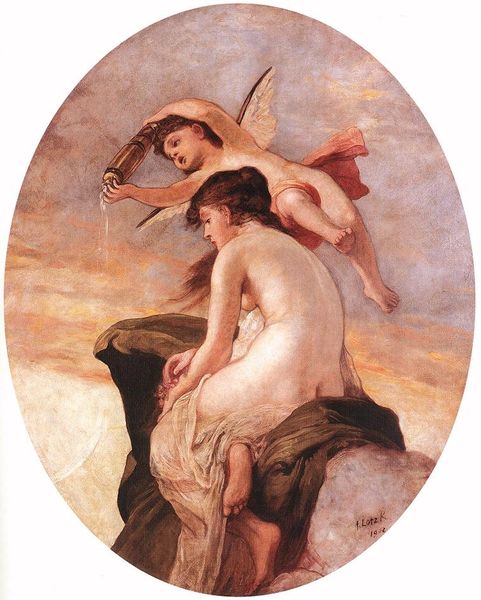
Copyright: Public Domain: Artvee
Curator: Before us is Dante Gabriel Rossetti's "Dante’s Dream", created around 1875. It's executed with pastel, pencil, and charcoal on paper. Editor: Well, immediately it feels soft, doesn't it? Like a half-remembered dream or a cherished secret whispered in sepia tones. There's this yearning quality, a sort of gentle melancholic sweetness. Curator: Rossetti's career and the Pre-Raphaelite Brotherhood he helped found, were deeply influenced by the medieval world, as were social norms and artistic movements such as Romanticism. He drew significantly on the literary past. "Dante’s Dream," of course, explicitly referencing Dante Alighieri’s *La Vita Nuova*, depicts a moment after the death of Beatrice, Dante’s idealized love. Editor: That explains the intensity, the slightly haunted air. The kiss, almost ethereally light, is like a farewell, a passing on. It makes you wonder, who are we really mourning—the lost beloved or the lost possibility of love itself? Curator: And think about the artistic conventions around portraying grief in this era. Rossetti pushes beyond simple portraiture here, right? He brings forth so many interesting historical factors while reflecting how intense social scrutiny influenced personal grief. The piece shows Dante's dream itself, after all. The red-robed figure of Love leading Dante to Beatrice; both of them have such solemn expression. It’s all symbolic gestures within a rigid historical frame. Editor: True, that red robe is arresting, a sudden flare amidst the subdued hues. But it's not cold or clinical. It burns like the last ember of a passionate fire. I suppose you can see echoes in modern art as well; not explicitly, perhaps, but in the way artists now capture the residue of intense experience. I can certainly sense an invitation to imagine, not just interpret what's laid out here. Curator: I concur completely! It's fascinating to consider how Rossetti negotiated social expectations. I would have to agree that Rossetti transcends mere historical reenactment and attains something timeless about love, longing, and grief’s aftermath. Editor: Indeed! So lovely when historical and intuitive insights can be aligned. It leaves you pondering the ephemeral nature of dreams and their enduring power on the human psyche, doesn't it?
Comments
No comments
Be the first to comment and join the conversation on the ultimate creative platform.

